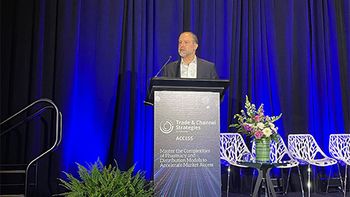
- Pharmaceutical Commerce - January/February 2012
The potential of translational research for new medicines
The proposed federal National Center for Advancing Translational Sciences holds promise for drug development
New medicines are critical if the world’s population is going to live longer and healthier lives. In the past 10 years, more than 300 new medicines have been approved by FDA. [1] Because of these medicines, deaths from heart disease and stroke are falling, the quality of life for those with HIV/AIDs has improved dramatically, cancer death rates have declined, certain rare diseases are being treated for the first time, and the diabetes epidemic has been met full force by a series of powerful medications; however, there are still many more unmet needs.
However, the US life sciences industry is facing serious threats to its continued well-being. The problems are broad and well documented: the patent expiration of many products, taking nearly $80 billion in annual revenue off the table [2]; the billion-dollar-plus cost of getting a new drug approved [3]; and the decline in approvals, despite significant increases in R&D funding over the past decade [4].
This means that unless new sources of revenues can be found and the adoption of a lower cost and higher efficiency R&D business model that is networked, virtual and flexible is implemented, the R&D function faces a continued bleak period of deep cost-cutting. Without allocating the appropriate resources to medicine, health and science, as many of the world’s emerging economies are doing, the US will not be able to remain on the forefront of medical innovation. Rapidly growing economies such as China, India, and Brazil are building out their offerings in science and medicine, and I ask will these be the new centers for the rapid identifying of new molecules, which is the core of all pharmaceutical development?
The promise of translational research
It is therefore understandable that the pharmaceutical industry has sought additional solutions. Several leading global companies have entered relationships with US medical centers and universities to create partnerships that will move forward first-rate scientific research. However, as the current pipelines proves, new molecules are years away.
A solution has been proposed by the US government — one that could yet prove to be pivotal to the future of our industry. The National Institute of Health (NIH) has proposed creating the National Center for Advancing Translational Sciences (NCATS). Translational research is the process of translating the findings in basic research more quickly and efficiently into medical practice.[5] Often, transitional medicine is referred to as the gray area between research and development. The overall goal is rapid medical outcomes.
NCATS is tasked with developing new therapeutics where “It would develop and offer innovative services and expertise in moving promising products through the development pipeline, as well as develop novel approaches to therapeutics development, stimulate new avenues for basic scientific discovery, and complement the strengths of existing NIH research activities.” [6] In addition, NCATS is expected to concentrate research in areas that currently do not attract commercial interest.
The US pharmaceutical industry needs to begin a new era of drug discoveries, better medicines and improved health; NCATS could be the catalyst it needs to achieve this. If it is to have that level of impact, many are asking if the current proposed budget for NCATS of $722 millions enough to ensure the US pharmaceutical industry remains competitive.[7] There is a bleak alternative —we continue to underfund promising scientific research and allow the leading pharmaceutical companies in other parts of the world to surpass our current position as the premier providers of medicines.. PC
References:
1. PhRMA. About The Biopharmaceutical Sector. PhRMA website. http://www.phrma.org/issues/about-biopharmaceutical-sector. Accessed August 1, 2011.
http://static.reuters.com/resources/media/editorial/20100621/Big_Pharma.pdf. Accessed August 1, 2011.
2. IMS Health. IMS Forecasts Global Pharmaceutical Market Growth of 5-8% Annually through 2014; Maintains Expectations of 4-6% Growth in 2010. Press release. IMS Health Web site. April 20, 2010. http://www.imshealth.com/portal/site/imshealth/menuitem.a46c6d4df3db4b3d88f611019418c22a/?vgnextoid=4b8c410b6c718210VgnVCM100 000ed152ca2RCRD&vgnextchannel=41a67900b55a5110VgnVCM10000071812ca2RCRD&vgnextfmt=default. Accessed August 1, 2011.
3. PhRMA. PhRMA Statement Regarding Benefits of New Medicines. PhRMA Website. http://www.phrma.org/media/releases/phrma-statement-regarding-benefits-new-medicines
4. Reuters. Big Pharma, Small R&D. June 2010.
5. “Research.” Institute for Integration of Medicine & Science, The University of Texas Health Science Center. Available at: http://iims.uthscsa.edu/research.html. Accessed August 1, 2011.
6. National Institute of Health. “FAQ: Proposed National Center for Advancing Translational Sciences.” National Institute of Health. Feedback NIH Web site. http://feedback.nih.gov/index.php/faq-ncats/. Accessed August 1, 2011.
7. Federation of American Societies for Experimental Biology (FASEB). HHS Releases Proposed Budget for NCATS. June 20, 2011. http://www.faseb.org/Policy-and-Government-Affairs/Publications/FASEB-Washington-Update-Articles/FASEB-Publications-Article-V iewer/tabid/1052/ArticleId/613/HHS-RELEASES-PROPOSED-BUDGET-FOR-NCATS.aspx. Accessed August 1, 2011.
ABOUT THE AUTHOR
Arjun Bedi is the global managing partner for Accenture's Health & Life Sciences R&D practice, where he specializes in leading major strategic business transformation initiatives for large pharmaceutical companies.
Articles in this issue
almost 14 years ago
Manufacturers are reviving their serialization plansalmost 14 years ago
HDMA updates its barcode guidance for wholesaler membersalmost 14 years ago
UPS Healthcare Logistics adds to network with an Italian acquisitionalmost 14 years ago
Gartner 2011 Healthcare Supply Chain Top 25 puts Cardinal Health at No. 1Newsletter
Stay ahead in the life sciences industry with Pharmaceutical Commerce, the latest news, trends, and strategies in drug distribution, commercialization, and market access.





